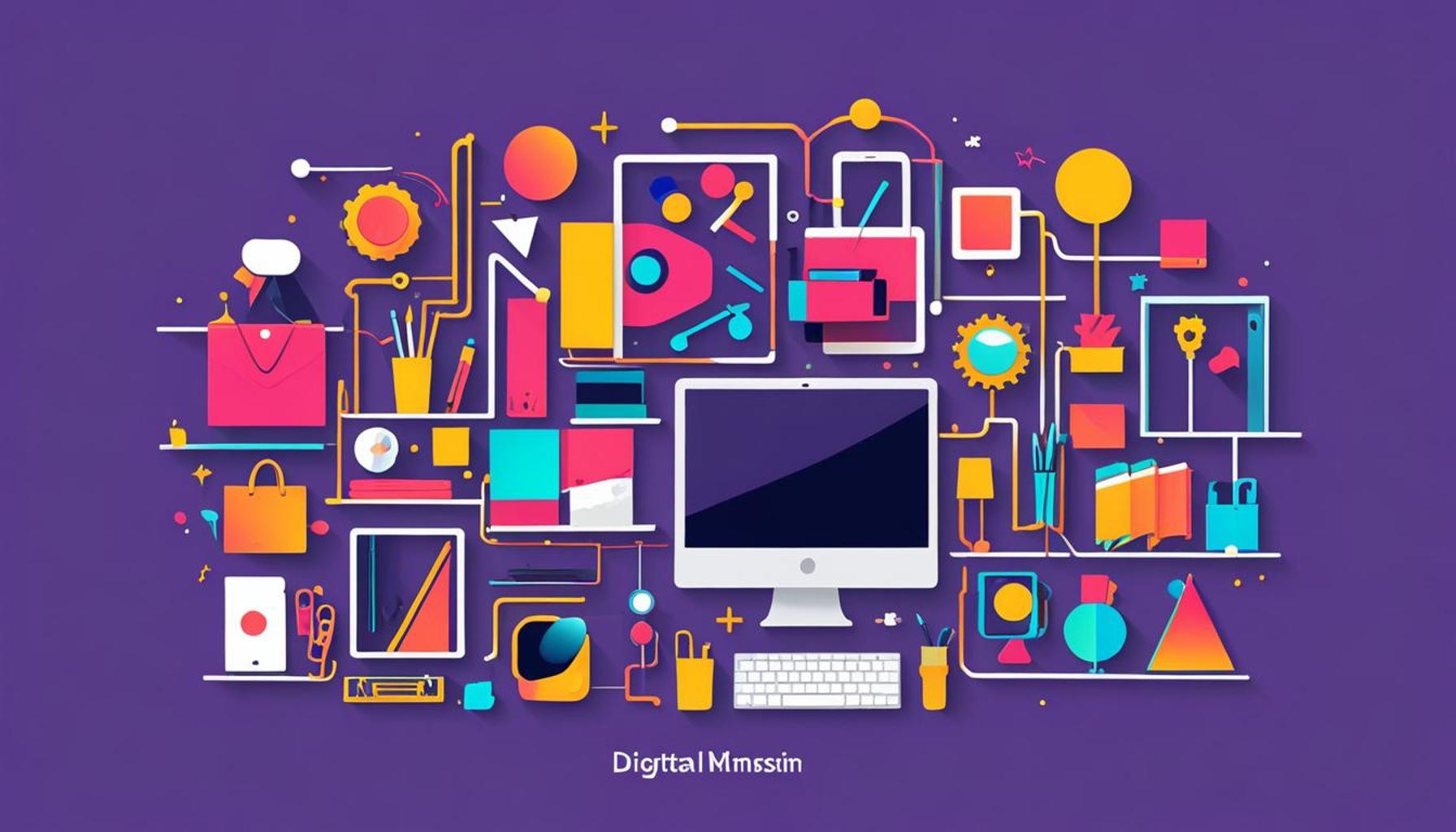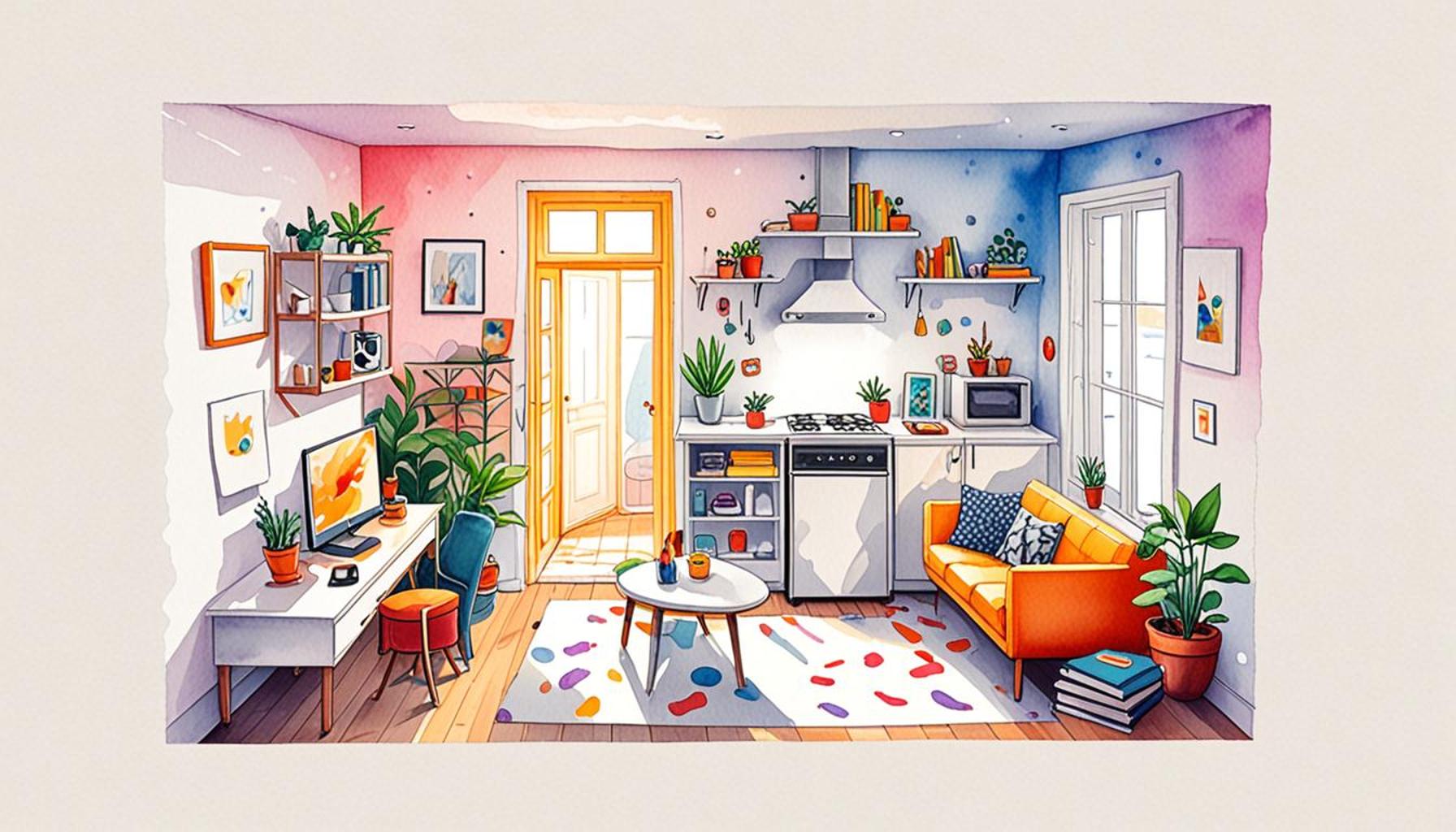Digital Minimalism: Organizing Virtual Space to Increase Productivity

The Importance of Digital Minimalism
In a world dominated by technology, the sheer volume of digital information can often feel overwhelming. From social media notifications to a constant influx of emails, these distractions can hinder our productivity rather than enhance it. Digital minimalism emerges as a solution, advocating for a more curated and intentional engagement with technology. By decluttering our digital environments, we can create a clearer path to focus, creativity, and, ultimately, personal fulfillment.
Many people face common challenges in navigating their digital lives. For instance, consider the impact of constant notifications that disrupt workflow. Research shows that it can take up to 23 minutes to regain focus after an interruption. Additionally, endless browsing options can lead to decision fatigue, making it difficult to choose among various online tasks or content, crippling our motivation to act. Moreover, a crowded email inbox can become a daunting hurdle, complicating the process of locating crucial communications amidst spam and promotional material.
However, digital minimalism is much more than just reducing screen time; it embodies a holistic approach towards the intentional use of technology. Here are a few key principles to consider:
- Removing unnecessary apps and subscriptions: Take a critical look at the applications you frequently use. If you find that particular apps or subscriptions are no longer serving your needs, it’s time to cut them out. This decluttering not only reduces digital chaos but also allows for a more intuitive interaction with remaining tools.
- Prioritizing essential tasks: Using task managers or productivity apps can help you focus on what matters most. Try employing methodologies like the Eisenhower Box or Pomodoro Technique to prioritize your daily activities, allowing you to concentrate on high-impact tasks rather than getting lost in the minutiae.
- Creating defined boundaries for technology use: Establishing specific time slots for checking emails or social media can create a healthier relationship with technology. Consider implementing a ‘digital Sabbath’—24 hours without screens—to reset your mindset and recharge your creativity.
This movement empowers individuals to take control of their digital footprints, striving for a more purpose-driven online experience. The journey toward embracing digital minimalism reveals tangible methods to streamline and organize your virtual space. As you adopt these practices, you may discover an increase in productivity and, importantly, a boost in overall life satisfaction.
Ultimately, the question remains: how can one adapt these principles to fit their unique lifestyle? With ongoing exploration and adjustment, individuals can tailor their digital habits to foster environments that cultivate focus and creativity. Embracing digital minimalism isn’t just a trend; it represents a profound shift toward intentional living in an increasingly digital world.

DIVE DEEPER: Click here to learn about mindful consumption
Strategies for Embracing Digital Minimalism
To fully embrace digital minimalism and enhance productivity, it is essential to adopt actionable strategies that can be seamlessly integrated into daily life. These strategies not only target the reduction of clutter in our digital spaces but also prioritize a focused and intentional interaction with technology. Below are several approaches to guide you on your path toward a more streamlined digital existence.
- Conduct a Digital Audit: Begin by evaluating your digital assets, including applications, files, and online accounts. Assess which tools facilitate your goals and which ones cause distraction. For instance, if you find yourself spending excessive time on entertainment apps, consider whether they align with your productivity objectives. A simple audit can help identify unnecessary digital baggage that requires removal.
- Organize Your Digital Workspace: Just as a physical workspace benefits from organization, your virtual space requires the same attention. Create folders for essential documents, categorize emails, and use tags to streamline your search processes. Tools like cloud storage can be beneficial in keeping files accessible yet organized, reducing time spent sifting through disarray.
- Limit Notifications and Alerts: Notifications are often at the forefront of digital distraction. Take the time to customize your settings across devices and applications. For example, disable non-essential alerts for social media and other distractions, allowing only critical notifications that pertain to work or personal priorities. This practice can significantly reduce interruptions and foster deeper focus during high-efficiency tasks.
- Set Specific Goals for Technology Use: To cultivate a purposeful relationship with technology, establish clear objectives for each digital interaction. Consider utilizing the SMART criteria—Specific, Measurable, Achievable, Relevant, and Time-bound—when creating goals. For instance, instead of merely stating, “I will use social media less,” specify a target, such as “I will limit my social media use to 30 minutes a day during designated breaks.”
Implementing these strategies is not purely about efficiency; it’s about creating a clutter-free environment that supports creativity and mindfulness. In fact, research indicates that people who practice digital minimalism report higher levels of satisfaction and well-being, as they can fully engage in the present moment without the constant pull of distractions.
Furthermore, embracing digital minimalism can lead to improved mental health. As individuals reduce their time spent on overwhelming platforms and sources of information, they often find an increase in free time, which can be redirected toward personal projects, hobbies, or family activities—ultimately enriching life experiences.
The journey to achieving a minimalist digital landscape is a personal and ongoing process. As you refine your strategies, reflect on what works best for you and remain open to adjustments along the way. Each person’s path will vary, but the core principles of intentionality and purpose will be common threads that bind your ideal digital experience. After all, thriving in our digital age means finding balance in our connections—and sometimes, less truly is more.
Exploring Digital Minimalism
In today’s fast-paced digital world, the practice of digital minimalism has emerged as an essential approach for those looking to enhance productivity. By intentionally streamlining virtual spaces, individuals can not only declutter their digital environment but also boost their focus and efficiency. The primary goal is to eliminate digital distractions and cultivate a more meaningful online experience.
Integrating digital minimalism into daily routines involves evaluating which tools and resources genuinely contribute to personal well-being and productivity. This process fosters a deeper understanding of one’s digital habits and paves the way for more intentional usage of technology. By prioritizing essential applications and filtering out distractions, users can redirect their energy toward more productive and fulfilling pursuits.
| Advantages | Key Benefits |
|---|---|
| Enhances Focus | By reducing digital clutter, individuals can concentrate better on tasks. |
| Boosts Creativity | A streamlined environment fosters innovative thinking and problem-solving. |
Furthermore, embracing digital minimalism often leads to increased mental clarity and reduced stress levels. By evaluating digital consumption habits and identifying unnecessary diversions, individuals embark on a journey towards a more mindful engagement with technology. This not only sharpens focus but also supports an overall enhanced productivity experience.
The trend toward digital minimalism underscores a growing recognition of the importance of mindful digital interactions and their direct correlation to real-world productivity. In a society dominated by distractions, organizing virtual spaces proves to be a vital strategy for anyone aiming to achieve peak performance and personal satisfaction.
DISCOVER MORE: Click here to enhance your productivity
Enhancing Productivity Through Digital Minimalism
Building on the strategies mentioned earlier, it is essential to explore the broader implications of digital minimalism and how it can fundamentally recalibrate our approach to productivity. The way we interact with technology is often a reflection of our values, priorities, and, ultimately, our successes in work and personal life. By understanding these relationships on a deeper level, we can unlock new paths to heightened productivity.
Creating a Digital Boundaries
One of the first steps toward achieving digital minimalism is establishing clear boundaries around technology use. This includes defining work hours, setting aside specific times for checking emails, and disconnecting during personal time. According to a study by the Institute for Corporate Productivity, companies with well-defined boundaries regarding communication technology enjoy 30% higher employee productivity. By implementing such boundaries, individuals can cultivate a more focused approach to their tasks, ensuring that they allocate their time and energy efficiently.
Decluttering Your Digital Tools
Another essential component of digital minimalism is the conscious selection of tools in your digital toolbox. As the vast landscape of apps and software continues to expand, it becomes crucial to evaluate which tools genuinely enhance your workflow. For example, rather than juggling multiple project management applications, consider consolidating your efforts into one comprehensive platform that meets most of your needs. Tools like Trello or Asana not only simplify task tracking but also centralize collaboration, leading to clearer communication and fewer overlaps in work.
The Role of Intentionality in Digital Consumption
In a world overflowing with information, being intentional about digital consumption plays a pivotal role in maintaining focus. This means actively choosing what content to engage with and being selective about the platforms used. For instance, rather than passively scrolling through news feeds, consider subscribing to newsletters that provide curated information relevant to your interests and goals. Research by the Pew Research Center shows that individuals who consciously curate their content experience lower levels of stress, as they create a more manageable information flow. This practice not only conserves mental energy but fosters a more engaged and informed mindset.
Leveraging Technology Mindfully
Another critical aspect of digital minimalism is leveraging technology in a manner that is mindful and purpose-driven. Embracing techniques such as the Pomodoro Technique, which involves working in focused intervals followed by short breaks, can significantly boost productivity while keeping distractions at bay. Additionally, apps designed to support this method, like Focus@Will or Forest, can enhance focus by gamifying productivity, creating a sense of urgency and purpose in work tasks.
Utilizing Automation for Efficiency
Automation can also serve as a powerful ally in your quest for simplicity. Tools like IFTTT (If This Then That) and Zapier can automate repetitive tasks, allowing you to streamline workflows effectively. By minimizing mundane activities, you free up mental space for higher-level thinking and creative pursuits, ultimately leading to enhanced productivity.
As you implement these strategies, remember that the essence of digital minimalism lies in cultivating a mindful relationship with technology. Striving for a balance between engagement and detachment can not only improve your productivity but also enrich your overall well-being in the digital age.
DISCOVER MORE: Click here to learn about transforming your space!
Conclusion: Embracing Digital Minimalism for a Productive Future
In a landscape inundated with incessant streams of information and ever-evolving technology, digital minimalism emerges as a vital strategy for fostering productivity and personal well-being. By implementing conscious practices such as setting digital boundaries, streamlining tools, and curating content carefully, individuals can proactively reshape their digital environments to promote focus and efficiency. Each of these strategies works harmoniously to liberate us from the mental clutter that so often hinders productivity.
This journey towards a minimalist digital life is not merely about using fewer tools or logging fewer hours online; rather, it is about cultivating a mindful relationship with technology that respects individual priorities and fosters meaningful engagement. As highlighted by research, setting clear boundaries can enhance productivity significantly, allowing us to reclaim our time and energy for what genuinely matters.
Moreover, embracing automation and efficient tools can streamline workflows, freeing us to engage in higher-level cognitive tasks that spur innovation and creativity. By thoughtfully selecting which digital experiences we immerse ourselves in, we empower ourselves to remain productive while reducing stress—elements that are crucial for success in both work and personal realms.
As we navigate our increasingly digital future, it is essential to prioritize the principles of digital minimalism as a means of enhancing productivity and achieving a fulfilling life. By committing to these practices, we can pave the way for a more organized, intentional, and ultimately productive existence in our virtual spaces.


